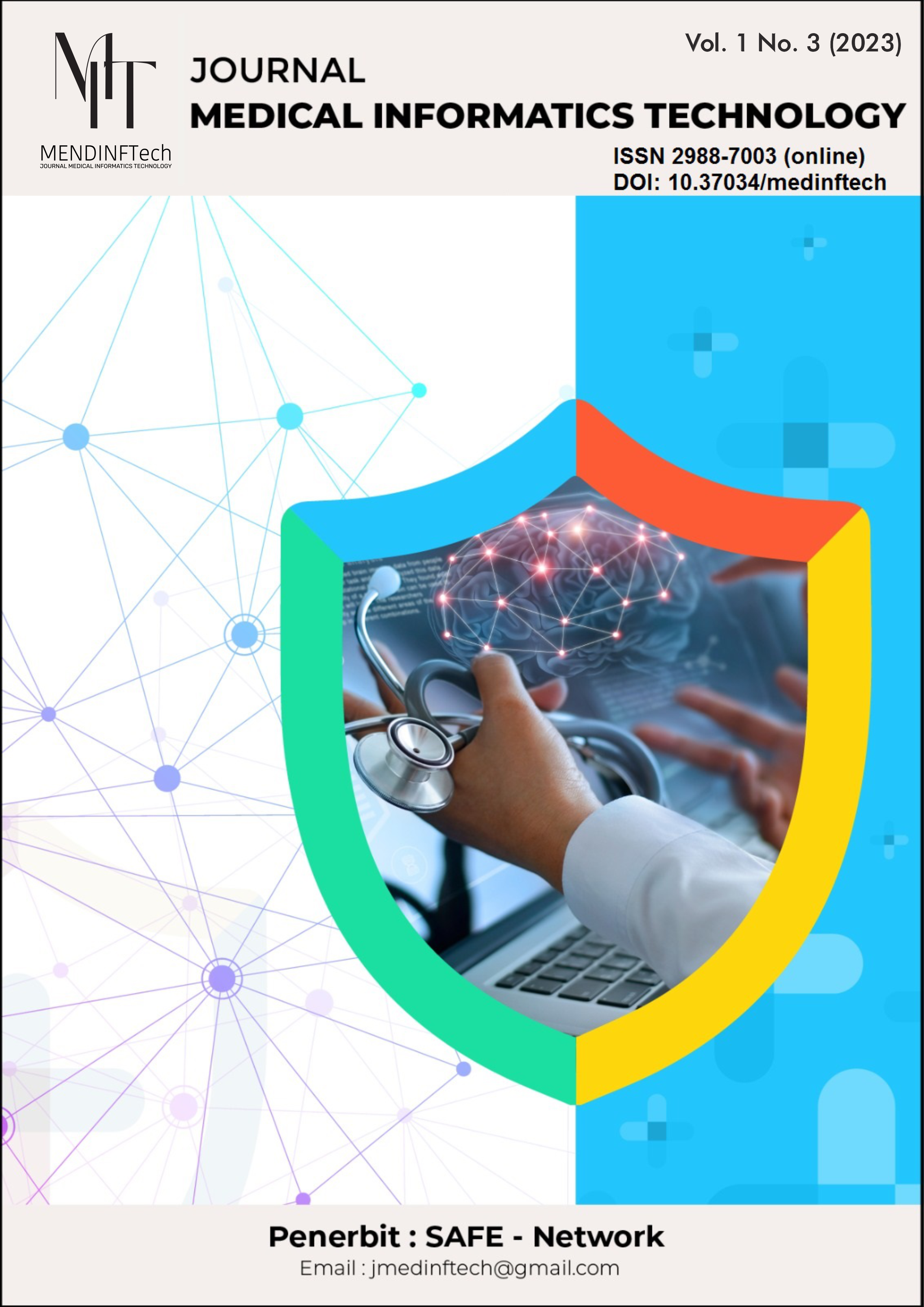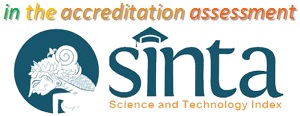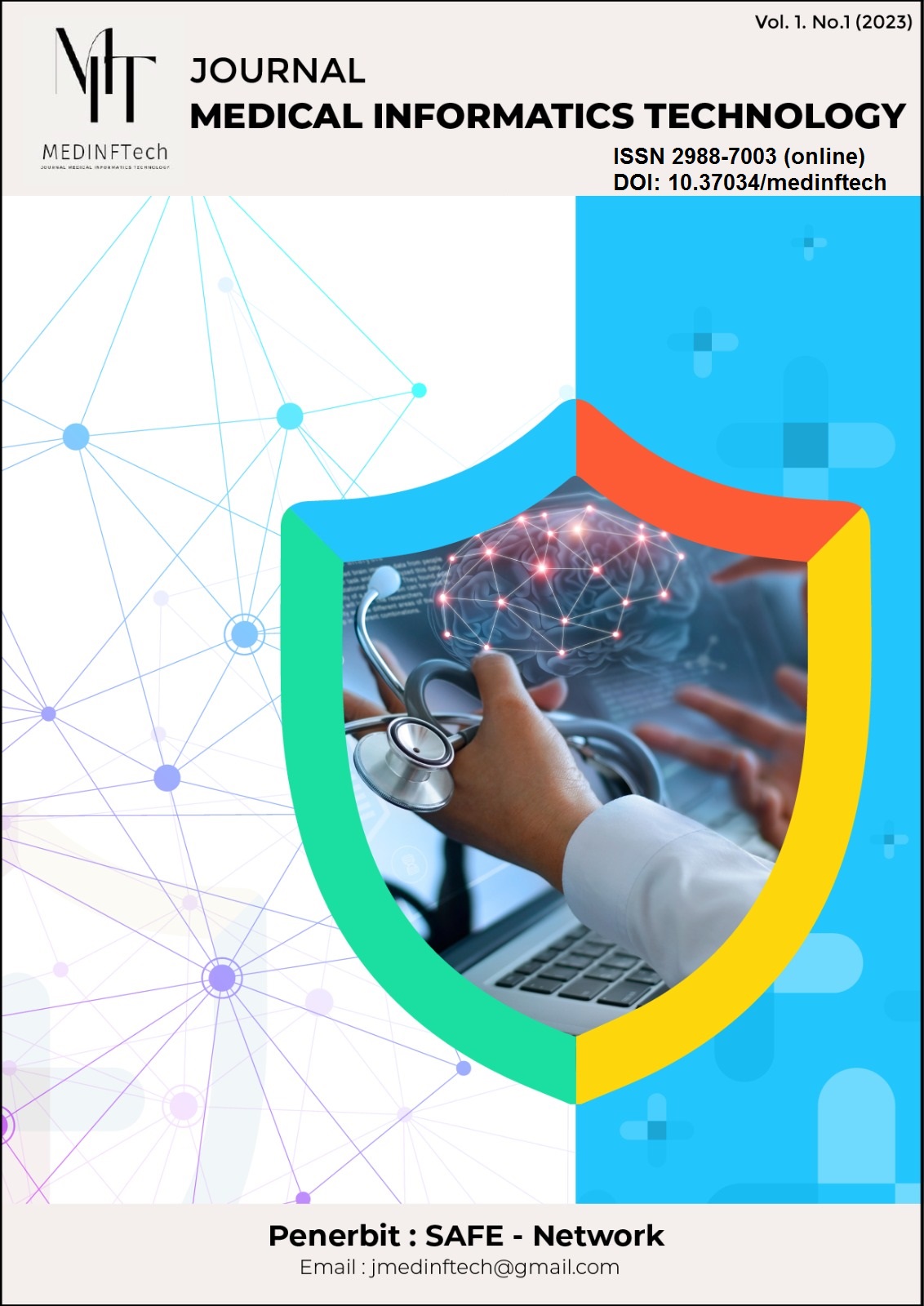A Tripartite Machine Learning Approach for Accurate Prognosis of COVID-19 Patient Survival
DOI:
https://doi.org/10.37034/medinftech.v1i3.13Keywords:
COVID-19, XGBoost, K-Nearest Neighbors (KNN), Support Vector Machine (SVM), Machine LearningAbstract
Accurate prognosis of COVID-19 patient survival is vital for healthcare decision-making. This research proposes a tripartite machine learning approach that integrates K-Nearest Neighbors (KNN), Support Vector Machine (SVM), and XGBoost for outcome prediction. Our hybrid model exploits the strengths of individual algorithms and combines their predictions using a weighted ensemble. Leveraging clinical data, KNN captures local patterns, SVM finds complex boundaries, and XGBoost enhances overall performance. Experimental results show exceptional precision (0.93), recall (0.93), and F1-score (0.93) for both classes, affirming accurate classification of "Alive" and "Died" cases. The achieved accuracy of 0.93 further demonstrates the reliability of the proposed approach. Our tripartite method holds the potential to enhance COVID-19 survival prediction, providing valuable insights for clinical practitioners and policymakers. This study contributes by seamlessly fusing KNN, SVM, and XGBoost models into a robust predictive tool, thereby aiding medical professionals in informed decision-making for patient care and resource allocation. The demonstrated success underscores the efficacy of a combined approach, highlighting its relevance in accurately predicting patient outcomes.
Downloads
References
F. Khoshbakhtian, A. Lagman, D. M. Aleman, R. Giffen, and P. Rahman, “Prediction of severe COVID-19 infection at the time of testing: A machine learning approach.” Oct. 18, 2021. doi: 10.1101/2021.10.15.21264970.
F. Aziz, Irmawati, D. Riana, J. D. Mulyanto, D. Nurrahman, and M. Tabrani, “Usability Evaluation of the Website Services Using the WEBUSE Method (A Case Study: covid19.go.id),” J. Phys. Conf. Ser., vol. 1641, no. 1, p. 012103, Nov. 2020, doi: 10.1088/1742-6596/1641/1/012103.
A. Aggarwal et al., “COVID-19 Risk Prediction for Diabetic Patients Using Fuzzy Inference System and Machine Learning Approaches,” J. Healthc. Eng., vol. 2022, p. 4096950, Apr. 2022, doi: 10.1155/2022/4096950.
R. Maria Colaco, Shreya, N. V. Subba Reddy, and U. D. Acharya, “An prediction of Healthy Diet required to Ease the recovery from Covid-19 using the approach of Machine Learning.,” J. Phys. Conf. Ser., vol. 2161, no. 1, p. 012019, Jan. 2022, doi: 10.1088/1742-6596/2161/1/012019.
F. Gorji, S. Shafiekhani, P. Namdar, S. Abdollahzade, and S. Rafiei, “Machine learning-based COVID-19 diagnosis by demographic characteristics and clinical data,” Adv. Respir. Med., Feb. 2022, doi: 10.5603/ARM.a2022.0021.
P. Theerthagiri, I. J. Jacob, A. U. Ruby, and Y.Vamsidhar, “An Investigation of Machine Learning Algorithms on COVID-19 Dataset ” Sep. 08, 2020. doi: 10.21203/rs.3.rs-70985/v1.
N. S. Kiruthika and Dr. G. Thailambal, “Dynamic Light Weight Recommendation System for Social Networking Analysis Using a Hybrid LSTM-SVM Classifier Algorithm,” Opt. Mem. Neural Netw., vol. 31, no. 1, pp. 59–75, Mar. 2022, doi: 10.3103/S1060992X2201009X.
U. M. Abatcha, O. P.-W. L. Camille, and A. Nadine, “Machine learning models for analysis, evaluation and prediction of the covid-19 dataset.,” 2022. Accessed: Aug. 30, 2023. [Online]. Available: https://www.semanticscholar.org/paper/Machine-learning-models-for-analysis%2C-evaluation-of-Abatcha-Camille/c7b6ecce673c70dd2922d4d01d57b4aa30de2dfd
P. Kumar and M. Sharma, “Feature-Importance Feature-Interactions (FIFI) graph: A graph-based Novel Visualization for Interpretable Machine Learning,” 2021 Int. Conf. Intell. Technol. CONIT, pp. 1–7, Jun. 2021, doi: 10.1109/CONIT51480.2021.9498467.
R. S. Jain, “Study of Different Multi-instance Learning kNN Algorithms,” Int. J. Comput. Appl. Technol. Res., vol. 3, no. 7, pp. 460–463, Jul. 2014, doi: 10.7753/IJCATR0307.1013.
S. Huang, N. Cai, P. P. Pacheco, S. Narrandes, Y. Wang, and W. Xu, “Applications of Support Vector Machine (SVM) Learning in Cancer Genomics,” Cancer Genomics Proteomics, vol. 15, no. 1, pp. 41–51, 2018, doi: 10.21873/cgp.20063.
A. Sharma and W. J. M. I. Verbeke, “Improving Diagnosis of Depression With XGBOOST Machine Learning Model and a Large Biomarkers Dutch Dataset (n = 11,081),” Front. Big Data, vol. 3, p. 15, Apr. 2020, doi: 10.3389/fdata.2020.00015.
W. Yu, S. Li, T. Ye, R. Xu, J. Song, and Y. Guo, “Deep Ensemble Machine Learning Framework for the Estimation of PM2.5 Concentrations,” Environ. Health Perspect., vol. 130, no. 3, p. 037004, Mar. 2022, doi: 10.1289/EHP9752.
X. Li, Y. Bai, and Y. Kang, “Exploring the social influence of Kaggle virtual community on the M5 competition.” arXiv, Sep. 30, 2021. doi: 10.48550/arXiv.2103.00501.
J.-O. Palacio-Niño and F. Berzal, “Evaluation Metrics for Unsupervised Learning Algorithms.” arXiv, May 23, 2019. doi: 10.48550/arXiv.1905.05667.
G. M. Parra-Bracamonte, N. Lopez-Villalobos, and F. E. Parra-Bracamonte, “Clinical characteristics and risk factors for mortality of patients with COVID-19 in a large data set from Mexico,” Ann. Epidemiol., vol. 52, pp. 93-98.e2, Dec. 2020, doi: 10.1016/j.annepidem.2020.08.005.
A. Serra, P. Coretto, M. Fratello, R. Tagliaferri, and O. Stegle, “Robust and sparse correlation matrix estimation for the analysis of high-dimensional genomics data,” Bioinforma. Oxf. Engl., vol. 34, no. 4, pp. 625–634, Feb. 2018, doi: 10.1093/bioinformatics/btx642.
N. E. Koufi, A. Belangour, and M. Sdiq, “Research on Precision Marketing based on Big Data Analysis and Machine Learning:Case Study of Morocco,” Int. J. Adv. Comput. Sci. Appl., vol. 13, no. 10, 2022, doi: 10.14569/IJACSA.2022.0131008.
V. N. G. Raju, K. P. Lakshmi, V. M. Jain, A. Kalidindi, and V. Padma, “Study the Influence of Normalization/Transformation process on the Accuracy of Supervised Classification,” 2020 Third Int. Conf. Smart Syst. Inven. Technol. ICSSIT, pp. 729–735, Aug. 2020, doi: 10.1109/ICSSIT48917.2020.9214160.
W. Nugraha and A. Sasongko, “Hyperparameter Tuning on Classification Algorithm with Grid Search,” SISTEMASI, vol. 11, no. 2, p. 391, May 2022, doi: 10.32520/stmsi.v11i2.1750.
L. Quaranta, F. Calefato, and F. Lanubile, “KGTorrent: A Dataset of Python Jupyter Notebooks from Kaggle,” in 2021 IEEE/ACM 18th International Conference on Mining Software Repositories (MSR), May 2021, pp. 550–554. doi: 10.1109/MSR52588.2021.00072.









